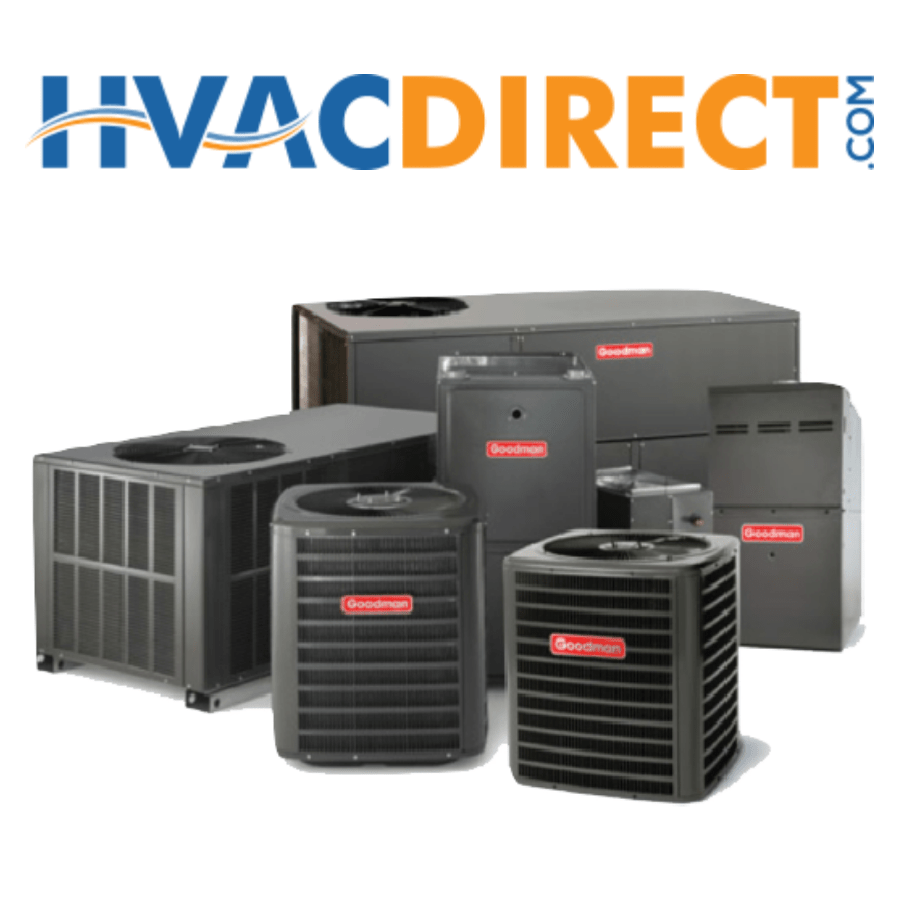It’s never too early to think about an air conditioning (AC) solution, whether you’re just starting a business or rebuilding your commercial or residential building. The comfort of your building’s occupants is frequently a major issue, but so is efficiency, maintenance, and the upfront cost of a new system.
Nonetheless, there are numerous possibilities for various building styles. Affect your business goals and what you need to achieve proper ventilation and a suitable temperature within your space to determine the best pick. Packaged Terminal Air Conditioners (PTACs) are commonly used in large buildings with multiple rooms (hotels, hospitals, and offices).
While you may have seen them previously in various contexts, it may not be evident why they are so popular. Let’s look at why these industries select PTAC units over alternative AC solutions.
What Is PTAC?
Packaged Terminal Air Conditioner Each unit is a “packaged” or single-unit air conditioner that heats and cools. Standard PTAC sizes include:
- “42 X 15”
- “40 X 15”
- “36 X 15”
PTACs only run on electricity and produce 7,000-15,000 BTUs. While some versions employ electric heat pumps, others use an external heat source such as a hydronic coil or heat pump integration. They are not just for commercial or office buildings there are many residential PTAC units available as well.
These devices are normally fitted through a metal PTAC sleeve beneath a window. The installer drills a hole in the wall and inserts a support and insulation sleeve. That’s all! Just insert it into the sleeve and plug it in!
Hotels’ PTAC Use
There are many reasons why PTACs are ideal for hotels. From visitor comfort to ease of repair, PTACs provide a heating and cooling solution that standard ductwork cannot.
-
Innkeepers’ Comfort
Hotel guests’ comfort is a primary priority. However, a central HVAC system with a wall-mounted thermostat does not provide individual control. That’s one of the reasons hotels put PTACs in every room — unparalleled personalized control.
With ducts and thermostats, guests frequently need to contact the front desk to adjust their units. Even then, other guests may have differing tastes, making it impossible to please everyone. No normal central AC system can provide individual guest control like a PTAC unit in each hotel room.
The PTAC unit’s control panel allows guests to adjust their own room temperature. Installing a wall-mounted thermostat is optional for accessible operation.
-
Low-cost Initialization
Buying numerous air conditioners for each room may seem like a pricey nightmare when attempting to keep many rooms comfortable. But there’s a reason PTACs are still used at inexpensive motels. Many superb PTAC models are under $1,200 each. You can also buy refurbished ones that work the same. This makes owning a fleet of units more feasible.
-
Low-Maintenance
Any central air system failure is sure to be a big job. A failure with the main system can leave the entire building without air conditioning.
If a hotel’s PTAC unit fails, the entire floor need not be evacuated. You simply need to buy a new or refurbished unit for one room, minimizing disruptions.
Replacing a PTAC is as simple as buying another unit of the same size. Installing and replacing individual units is frequently easier than ducted systems.
PTACs can also be fixed by non-experts. The hotel maintenance personnel can often install and maintain PTAC systems themselves, unlike bigger industrial AC solutions.
Why PTACs in Hospitals
What Makes PTAC Units Ideal for Hotels, Hospitals, and Offices? In addition to patient comfort, hospitals must meet indoor air quality regulations and provide temperature control. During the COVID-19 epidemic, the transfer of airborne infections across rooms was a major problem. To make interior spaces safer for guests, hospitals must restrict airflow between rooms.
Among other considerations, hospital air quality guidelines include:
- Keeping patients and employees happy
- odor removal
- releasing and avoiding anesthetic gas buildup
- Infection prevention via fresh air exchange
- Dehumidifier
While low initial cost and ease of installation are two of the main reasons hospitals use PTACs, there are two more benefits.
Thermostats for Patients and Staff
Because PTAC units provide individual temperature control, patients and visitors can customize their rehabilitation environment. So each guest can set their own temperature without impacting others.
PTAC units also have an easy-to-use control panel on the device. Installing a wall thermostat or setting the machine to use a remote control can aid patients who want to change the room temperature for their own comfort.
A PTAC machine can also control the temperature in workplaces or nurse stations. So patient and staff AC settings don’t conflict.
-
Air Flow
Some hospital air quality guidelines are fairly precise. Medical institutions treating patients with airborne illnesses must have an ACH of 6. Most experts recommend this for most constructions. ACH 12 or above for new construction.
In a sterile environment, workers bring in most bacteria and pollutants, hence high air turnover rate is critical.
Air turnover is the rate at which fresh outside air is swapped with old inside air. A higher air turnover rate suggests more fresh air is being introduced. Because PTAC units pull air from outside the building, they have a high turnover rate.
Why do offices use PTACs?
In a busy office full of professionals, business goals often trump personal comfort. However, research shows that even little changes in office temperatures can impair employee productivity.
But what is the ideal office temperature? A central heating and air conditioning system won’t allow management to accommodate everyone at once.
PTACs are not only inexpensive to build and maintain, but they also allow for individual office temperature management.
-
Staff Load
Individual employee temperature preferences can be easily addressed with PTACs. Individually fitted, self-contained units operated from the front dashboard. Allowing employees to adjust their own office temperature frees up management time to focus on productivity.
-
Super Cooling Power
There are many PTAC alternatives for offices of all sizes. A small unit can service a few occupants in an office. It may also heat and cool common areas like break rooms and cubicle floors.
1400 BTU units heat or cool 550-700 square feet, whereas 7000 BTU units heat or cool 250-300 square feet. While cooling an open floor of cubicles may require numerous units, a PTAC in a 700-square-foot office is fairly practical.
-
Non-intrusive Upkeep
Due to their ductless architecture, office managers generally prefer PTAC units to central air conditioning. These units don’t require expensive or disruptive ductwork repairs. PTAC units may typically be repaired or replaced without disrupting staff operations.
Also, a faulty unit does not affect everyone in an office complex. One device can be maintained or replaced while the others work properly.
-
Energy Savings
Modern PTAC models are even more efficient. Due to the fact that most small office buildings spend 32% of their electricity on cooling and ventilation, it is critical to invest in a long-term solution.
With newer models like the Friedrich Freshaire and GREE ETAC II series offering higher efficiency ratings than ever, PTACs can save office buildings money on energy costs.
Choosing the Right Unit
Choosing the appropriate PTAC unit might be stressful with so many factors to consider. Consider these crucial aspects when shopping about.
-
Choose the Proper Unit Size
When choosing a PTAC unit, make sure it fits your space. Bigger is better for PTACs, a frequent misperception. This is because a larger unit with more heating/cooling BTUs will blast the room with air much faster than a smaller unit, saving energy by not running as long.
While it appears to work that way, it actually does the reverse. Even well-ventilated spaces can suffer from oversized units. A unit with too many BTUs for the space may cycle on and off more frequently. This reduces its longevity. The idea is to match the unit’s power to the space’s square footage.
-
Precisely
While a brand new fleet of PTAC units would be ideal, cost is also a factor when selecting a new AC system. New units are cheap, but refurbished units are much cheaper. Before you buy the newest model, look for comparable versions that have been restored to work like new.
-
Observe the Efficiencies
It’s difficult to determine which of the several techniques to evaluate an AC unit’s efficiency is the best. The EER (Energy Efficiency Ratio) of PTAC power is common for most AC appliances.
A PTAC unit with an EER of 8.5 or above is ideal. Your state or local government may have minimal criteria depending on where you live. Do your homework before buying a new unit.
Conclusions
Hotels, hospitals, and offices have traditionally employed PTAC units for cooling. Due to their convenience, these devices are already gaining appeal in various industries.
PTACs enable individual guest control at a lower cost than standard ducted systems. This reduces their long-term operational costs without compromising comfort.
Their ease of maintenance, customized control, and affordability make PTAC units a great choice for many locations. Bluco Mechanical can provide a single PTAC for an apartment or a fleet of new PTAC units for your building.
Just call (929)447-2077 or visit our site to find out more and also get some information from our Guide For Mold In Your Home.



No Comments
Be the first to start a conversation